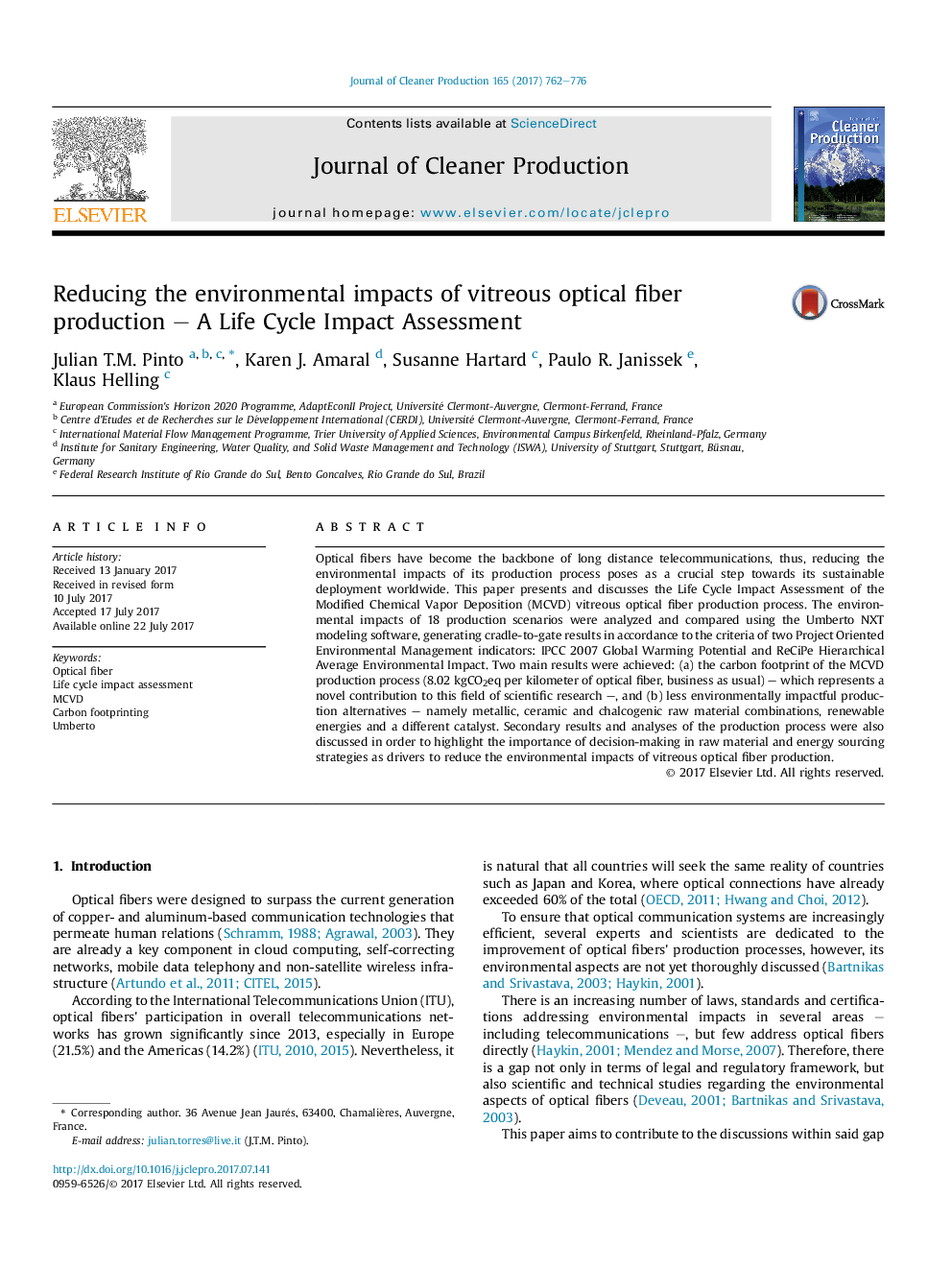| Article ID | Journal | Published Year | Pages | File Type |
|---|---|---|---|---|
| 5480045 | Journal of Cleaner Production | 2017 | 15 Pages |
Abstract
Optical fibers have become the backbone of long distance telecommunications, thus, reducing the environmental impacts of its production process poses as a crucial step towards its sustainable deployment worldwide. This paper presents and discusses the Life Cycle Impact Assessment of the Modified Chemical Vapor Deposition (MCVD) vitreous optical fiber production process. The environmental impacts of 18 production scenarios were analyzed and compared using the Umberto NXT modeling software, generating cradle-to-gate results in accordance to the criteria of two Project Oriented Environmental Management indicators: IPCC 2007 Global Warming Potential and ReCiPe Hierarchical Average Environmental Impact. Two main results were achieved: (a) the carbon footprint of the MCVD production process (8.02 kgCO2eq per kilometer of optical fiber, business as usual) - which represents a novel contribution to this field of scientific research -, and (b) less environmentally impactful production alternatives - namely metallic, ceramic and chalcogenic raw material combinations, renewable energies and a different catalyst. Secondary results and analyses of the production process were also discussed in order to highlight the importance of decision-making in raw material and energy sourcing strategies as drivers to reduce the environmental impacts of vitreous optical fiber production.
Related Topics
Physical Sciences and Engineering
Energy
Renewable Energy, Sustainability and the Environment
Authors
Julian T.M. Pinto, Karen J. Amaral, Susanne Hartard, Paulo R. Janissek, Klaus Helling,
